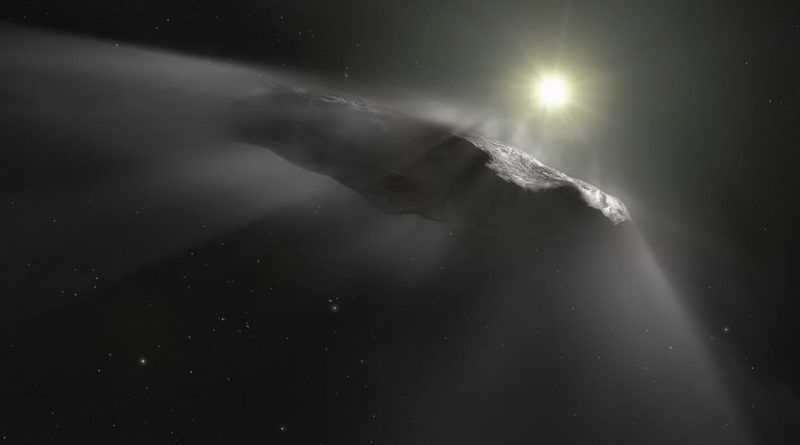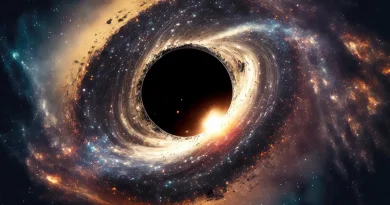The first interstellar crime puzzle may have been solved

Astronomers have provided a very simple explanation in a new study for âOumuamua, the first interstellar object discovered in our solar system.
Asteroid, comet, or alien spacecraft? âOumuamua has puzzled astronomers for years; an unknown object 400 meters long that entered the solar system in 2017. No object from outside the gravitational boundary of the sun had come towards us before, but âOumuamua was so fast that it could not be under the sun’s gravity. Also, the fact that it resembled asteroids but behaved like comets was surprising.
According to Science, a group of researchers now say âOumuamua was definitely a comet, but an unusual one. Jennifer Bergner, a chemist from the University of California, Berkeley who led the new study, says âWe can explain a lot of its weird behavior.â
Marco Micheli, an astronomer at the European Space Agency who was not involved in the study, believes it to be the most convincing modeling of âOumuamua so far. To him, this alien visitor was not very different from the comets of the solar system.
Oumuamua was first identified on October 19, 2017. A telescope in Hawaii observed it shortly after passing close to the sun and reaching a speed of 87 kilometers per second; a speed that was too high for an object of solar system origin. Astronomers named this object 1I/2017 U1 (Oumuamua), which means ‘the first distant messenger’ in Hawaiian culture.
The Hubble and Spitzer telescopes received that Oumuamua has a strange shape and looks like a cigar with a length of 100 to 400 meters. This object gained speed as it moved farther from the sun. Micheli, who was leading a study on the accelerated motion of Oumuamua in 2018, believes that this behavior may be due to the ejection of material from its tails. However, there was no evidence of material ejection from Oumuamua. Unlike comets, there was no gas or dust tail or gas around this object.
Bernhardt and his colleague Darryl Seligman think they can now explain what happened. Their modeling shows that Oumuamua may have had a normal and water-rich tail around one of the stars near the sun in the early stages of formation and before being ejected. They found that high-energy cosmic rays from galaxies that originated from supernovae and other energy events could have decomposed up to 30 percent of the water ice in this tail into hydrogen; hydrogen trapped in its ice on the way between the stars.
When Oumuamua faced the heat of the sun, hydrogen trapped, freed, and caused an increase in its speed. Molecular hydrogen, compared to carbon monoxide and carbon dioxide, which are released in regular comets, has much less mass and separates less dust from the surface of the comet. This could justify the absence of a tail and comet-like behavior. According to Berger, ‘There is no need to attribute these behaviors to weird and strange reasons.’
Previously, researchers suggested that Oumuamua might be an icy hydrogen asteroid or rock that formed in a cold gas and ice environment in a stellar interstellar cloud. Solomon, who proposed this idea in 2020, now prefers to explain the comet behavior of Oumuamua. He says, ‘This hypothesis explains all the strange aspects of Oumuamua. It is what we expect from a stellar interstellar cloud comet.’
Previously, there were claims that Oumuamua might be an alien probe that lit its engine after passing close to the sun. Can we now dismiss this claim? Berger believes that we can.
Alan Fitzsimmons, an astronomer at Queen’s University in Belfast, believes that the new study provides a good explanation of the true nature of Oumuamua and puts all the puzzle pieces together well.
However, Karen Meech, an astronomer at the University of Hawaii in Manoa, does not reject a simpler explanation. She says, ‘I still think a model based on normal comet-like activity could be sufficient. Perhaps this object has just had less dust. But I think the idea proposed in the new study is also creative and could be correct.’
More objects like ‘Oumuamua are expected to be observed in the future. In the near future, a new mission by the European Space Agency called the ‘Comet Interceptor’ will be stationed in an orbit farther than the Moon, in hopes of identifying interstellar objects if they pass through the solar system. Berner hopes we’re ready for the next space rock to come our way.




